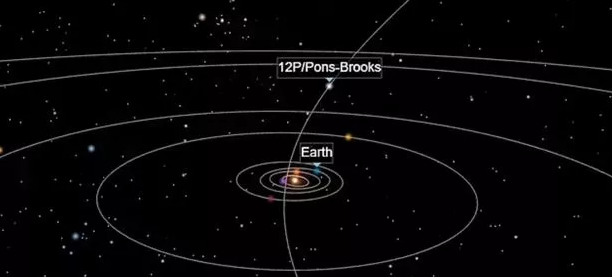According to an article released in The Science Times, an enormous comet, exceeding the size of Mount Everest threefold, has broken free from its celestial orbit and is now hurtling in the direction of our planet.
The British Astronomical Association (BRA) reported the event when it was initially observed on October 5. This was the second explosion seen, following an initial one observed in July. Large particles of ice and dust that orbit the Sun are known as comets. These objects, most famous for their long, trailing tails, are remnants of the solar system’s formation 4.6 billion years ago. Astronomers first spotted the rapidly approaching comet earlier this month when they witnessed a massive eruption from a space rock.

Astronomers became aware of this when the comet’s brightness increased twelvefold due to additional light reflecting from its extended coma. The coma is the atmosphere surrounding the comet’s nucleus, which forms when the rock approaches the Sun and its ice sublimates. Over the next few days, the comet’s coma grew significantly larger and began to develop peculiar horns. According to the research, the comet is currently speeding towards Earth and the inner solar system, where it will eventually slingshot around our Sun. There is no anticipation of direct contact with Earth from the comet, designated as 12P/Pons-Brooks. The Science Times asserts that on April 21, 2024, when it will be closest to Earth, it may be visible to the naked eye. It will take until 2095 for this comet to return.

As per NASA’s Jet Propulsion Laboratory, 12P/Pons-Brooks has been categorized as a “near-Earth asteroid” because of its close proximity to the Earth’s orbit. However, there is no cause for concern, as computer simulations have not shown any imminent danger of it colliding with our planet.
Every 26,000 days (71.18 years), the comet completes an orbit around the Sun, traveling as far as 33.58 astronomical units (AU) from its surface and as close as 0.78 AU (one AU is roughly 150 million kilometers). Its orbit is highly elliptical.
- Misleading Video Alters Prime Minister Shehbaz’s Speech Targeting Political Rival, Not His Party - 21/04/2024
- ATC Grants Three-Day Remand for Suspects in Ichhra Bazaar Harassment Case - 19/03/2024
- Pakistan, India, and Bangladesh Lead World in Severe Smog Crisis, Exceeding WHO Guidelines - 19/03/2024


